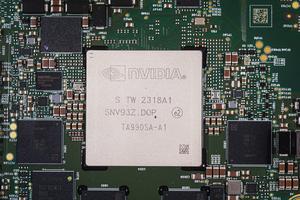Business
/ArcaMax

Jill On Money: Should you fire your financial advisor?
This may be one of those indicators that signals the top of the stock market, but I have recently been inundated with a slew of questions that boil down to this: Should I fire my financial advisor?
Maybe investors think that it’s easy to rack up double-digit returns, because that’s what’s happened over the past 18 months or so.
In 2022, ...Read more

Jill On Money: Still coping with inflation
When the government released the June Consumer Price Index, there was a sigh of relief among economists.
The overall CPI rate actually slid by 0.1 percent in June from May. For the 12 months through June, CPI increased by 3% and the core rate, which strips out food and energy, was up 3.3%, the smallest 12-month increase since April 2021.
Let�...Read more

Jill On Money: Summer mail bag
It’s that time of year, when the inbox is bulging, so time to get cracking on a lightning Q&A!
Question: I will be receiving $160,000 from a life insurance policy. I do not want to risk it in the stock market -- I want to put it somewhere safe where it'll be able to earn some interest. Your thoughts?
Answer: You can investigate government ...Read more

Jill On Money: Half time for stocks
There’s nothing like a soaring stock market to make a summer break more enjoyable. The S&P 500 index’s near 15 percent return for the first half of the year ranks as the 13th best start since 1950, according to Comerica Wealth Management.
Before you break out the confetti, it’s notable that the entire universe of stocks did not rise ...Read more

Jill On Money: Summer financial to-dos
The stock market is up, the inflation rate is moving down, and everything is fine, right?
Maybe, or maybe it’s summer, and you don’t want to deal with your financial life. Not so fast... just a little bit of focus might help save you or make you some money before the next Heat Dome descends.
Here are few items for your summer financial to-...Read more

Jill On Money: Elder financial abuse is on the rise
The world recently recognized Elder Abuse Awareness Day, a term that has many applications, depending on the region.
In this column, we are focusing on the financial exploitation of older Americans, which can be divided into two categories: financial abuse, which is committed by someone the victim knows, and financial fraud, which is ...Read more

Jill On Money: The high cost of parenting
Parents, it’s not just you: It really does cost a lot to raise a child in the United States.
The annual Child Cost Aware of America (CCAoA) report is out and the results are staggering. The national average price of childcare for 2023 was $11,582 – and that’s just the AVERAGE!
In many parts of the country, especially those that have seen...Read more

Jill On Money: Lessons better than summer school
More than 2 million high school and college students are expected to work summer jobs or internships this year.
For most, the summer is about making money, but toiling during the dog days can help young workers flesh out what they like and dislike about a particular job, determine what kind of workplace environment appeals to them, and can help...Read more

Jill On Money: Green shoots for housing inventory
The spring housing season is almost over, and the results have been mixed.
Both existing and new home sales dipped in April, though prices remain elevated. The median existing-home sales price was $407,600 in April, and $433,500 for a new house.
Those numbers have jumped due to the pandemic-era frenzy for real estate. Four years ago, the ...Read more

Jill On Money: Slow progress on inflation
The progress on inflation has been frustratingly slow this year.
The most recent evidence was found in the Consumer Price Index (CPI), which increased by 3.4 percent from a year ago in April, from 3.5% in March.
The Core rate, which removes food and energy, was up 3.6% from a year ago, from 3.8% in the prior month.
Although those changes do ...Read more

Jill On Money: Financial advice for college grads
With campus protests grabbing the headlines, it’s easy to lose sight of an important fact: About 4 million Americans will graduate from college this year and for them, life is about to become more complicated.
The good news is that a robust labor market has provided many with well-paying jobs.
The median annual wage for recent college ...Read more

Jill On Money: Two-tiered retirement
Are Americans prepared for retirement? It depends on who you ask.
The Alliance for Lifetime Income (ALI) released a study with an eye-catching headline: Two-thirds of peak Baby Boomers are not financially prepared for retirement.
However, results of EBRI’s 2024 Retirement Confidence Survey (RCS) found “two-thirds of the workers and three-...Read more






